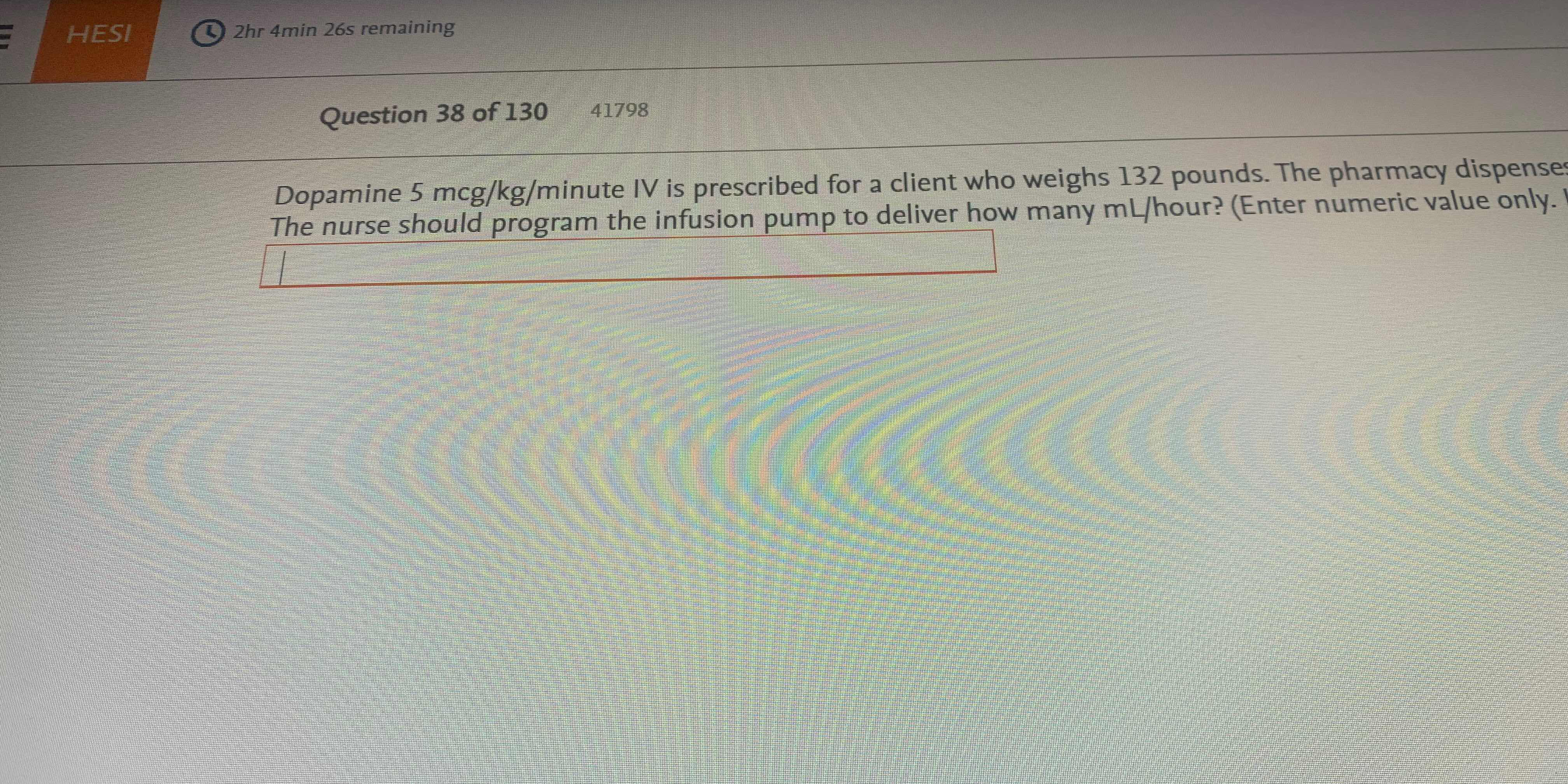Dopamine 5 mcg/kg/minute IV is prescribed for a client who weighs 132 pounds. The nurse should program the infusion pump to deliver how many mL/hour?

Understand the Problem
The question is asking for the calculation of the infusion rate of dopamine in mL/hour for a client based on their weight and the prescribed dosage. To solve it, we need to convert the client's weight from pounds to kilograms and then use the dosage to calculate the required mL/hour for the infusion.
Answer
18 mL/hour
Answer for screen readers
The nurse should program the infusion pump to deliver approximately 18 mL/hour.
Steps to Solve
- Convert Weight from Pounds to Kilograms
To convert the weight from pounds to kilograms, use the conversion factor: 1 pound = 0.453592 kilograms. For the client weighing 132 pounds: $$ 132 \text{ pounds} \times 0.453592 \text{ kg/pound} = 59.87 \text{ kg} $$
- Determine the Total Micrograms of Dopamine Required per Minute
The prescribed dosage is 5 mcg/kg/minute. Multiply this dosage by the client's weight in kilograms: $$ 5 \text{ mcg/kg/minute} \times 59.87 \text{ kg} = 299.35 \text{ mcg/minute} $$
- Convert Micrograms per Minute to Milliliters per Hour
Next, we need to convert the dosage from micrograms per minute to milliliters per hour. First, convert the micrograms to milligrams, knowing that 1 mg = 1000 mcg: $$ 299.35 \text{ mcg/minute} \div 1000 = 0.29935 \text{ mg/minute} $$
Since there are 60 minutes in an hour, convert the dose to hourly rate: $$ 0.29935 \text{ mg/minute} \times 60 \text{ minutes/hour} = 17.961 \text{ mg/hour} $$
Finally, if the pharmacy dispensed dopamine in a concentration of, for instance, 1 mg/mL, we can now find the required mL/hour. $$ \frac{17.961 \text{ mg/hour}}{1 \text{ mg/mL}} = 17.961 \text{ mL/hour} $$
- Round the Final Answer
Rounding the final answer gives approximately 18 mL/hour, suitable for programming the infusion pump.
The nurse should program the infusion pump to deliver approximately 18 mL/hour.
More Information
Dopamine is commonly used in critical care for its cardiovascular effects. Calculating infusion rates accurately is crucial to ensure patient safety and effectiveness of treatment.
Tips
- Failing to convert pounds to kilograms correctly can lead to incorrect dosing.
- Forgetting to convert micrograms to milligrams before calculating hourly rates.
- Not properly rounding the final infusion rate, which can lead to programming errors.
AI-generated content may contain errors. Please verify critical information